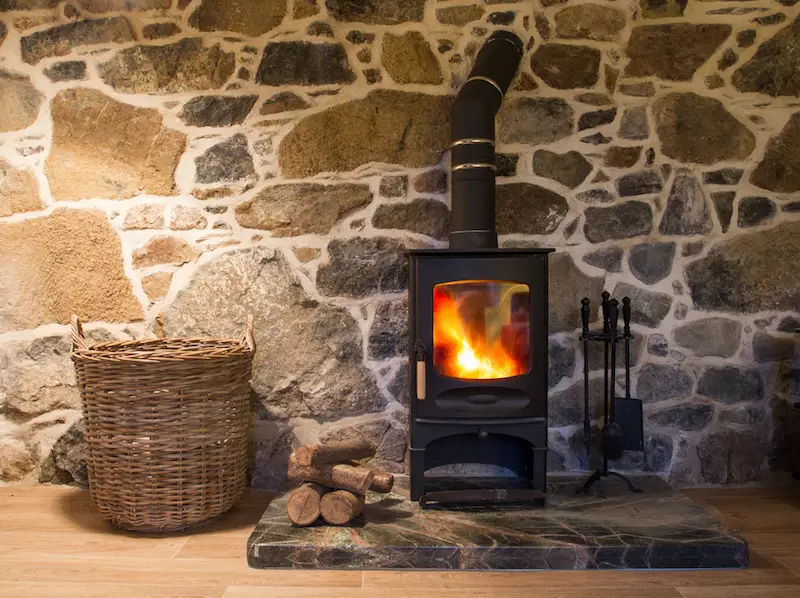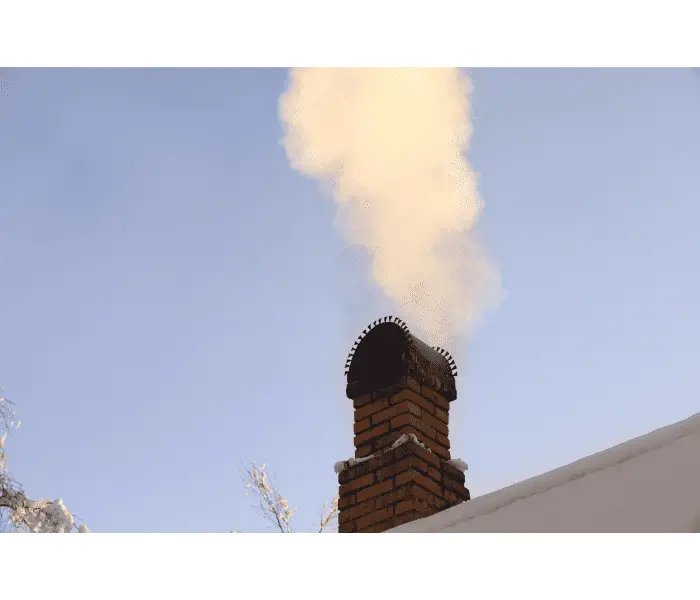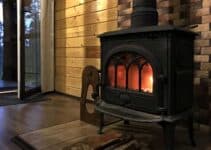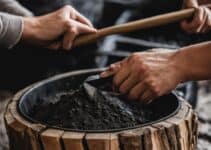When choosing a method for heating your home, temperature isn’t necessarily the only factor to consider. Having a stove that keeps you warm and cosy in the winter is all well and good, but keeping rooms comfortably dry and free from unwanted damp is also desirable.
But do log burners help with damp? The good news for those considering a log burner is that they often prove effective at combatting damp and excess moisture. A roaring stove will typically draw air from the room it’s placed in, sucking in and heating any ambient moisture before evaporating and expelling it through the chimney system.
Indeed, some log burner owners even claim that the atmosphere their stove creates can be too dry at times, and that they have to take measures to keep air humidity at comfortable levels.
Confusingly, there may also be times when you notice condensation appearing on your stove. This can happen when the stove is not in use, or when fuel is not properly dried out prior to burning.
We’ll take a closer look at when and why this might be the case.
We’ll also be covering why log burners can be particularly effective at combatting indoor damp, as well as a few tips for restoring moisture to the air should you find things get too dry once the log fire gets going!

Do log burners reduce moisture?
In short, log burners help to reduce moisture in a room and are often an effective tool at combatting damp. This is particularly true of stoves that draw their air from the room they are placed in.
Some exceptions to this are stoves which operate via a ‘closed loop’ system, where an inflow pipe allows them to draw the majority of their oxygen and air from outside.
Even so, these stoves will still raise the air temperature of a room, which will in turn increase the capacity of the air to hold moisture.
Dampness in homes is usually caused when the moisture in the air condenses on comparatively cold surfaces.
Poor air circulation and low temperatures can exacerbate this. In order to combat damp manifesting on surfaces, it is not only necessary to reduce the amount of moisture in the air, but to increase air flow and air temperature.
Log burners can be an effective way of doing all of this simultaneously. Not only will they raise the temperature of your home, helping the air ‘carry’ more moisture, but they will draw this moist air in and expel it via combustion.
Typically, when a wood stove burns in the winter, it draws warm, moist air into its system and expels it through the chimney. This warm, moist air is subsequently replaced by cooler, drier air from outside.
Do log burners cause damp?
Generally speaking, log burners are far more likely to help with damp than to cause it. That being said, there are times when you may notice condensation forming on your wood stove.
Burning wood produces a certain amount of moisture. If a stove is able to function properly, this moisture will be evaporated and expelled by the combustion process.
However, if the evaporated moisture is allowed to cool before it reaches the outside, this can cause condensation to form higher up the flue or chimney system.
The chances of this occurring are heightened if you burn fuel that hasn’t been dried properly. Properly dried fuel is sometimes referred to as kiln-dried or seasoned wood.
‘Green wood’, or wood with higher moisture content, tends to produce more smoke and steam when burned.

Do Log Burners Cause Condensation
Log burners can cause condensation. If your log burner does not burn hot enough for long enough, condensation can form. Condensed moisture can combine with chemicals from the combustion process, forming a sticky, tar like residue that can damage your stove whilst also increasing the risk of chimney fires.
In summer, if a wood stove is out of use, the cool surface of the stove may act as a condenser for warmer, moist air. You may find droplets forming outside or inside your stove if the ambient moisture in your home is high.
In such instances, increasing the circulation in the room, lighting your stove, or introducing desiccants (materials that absorb moisture) into your stove can help.
Some people find that keeping a thin layer of ash on the bottom of the stove when idle can help absorb any moisture, preventing it from forming on the stove itself.

Will a Log Burner Stop Condensation?
Because warmer air has a far higher capacity to ‘carry’ moisture than cool air, maintaining a steady, warm temperature in the home can prevent moisture from condensing and collecting in liquid form. A log burner can help in this regard.
Nevertheless, cool surfaces, such as windows, can still cause log burner condensation to form. This is why if the hot air in your home is damp it is a good idea to help it ‘escape’ outdoors, as any cooling of this air will result in liquid moisture forming.
Log burners can be a cheap, effective way of encouraging this necessary circulation, by drawing warm, moist air in and expelling it via the chimney system.
Many log burner owners find they are effective at reducing condensation during times when it’s likely to occur.
For example, many wood stove users find that having the stove burning while wet clothes are drying in the room can help prevent the evaporated moisture from appearing as condensation on home surfaces.
Final thoughts
By increasing room temperature and helping to draw moist air into their combustion systems, log burners can be an effective way at combatting damp inside your home. Some users find that wood stoves can even dry rooms out too much!
If you find things are getting a bit too arid, try letting damp clothes dry indoors to add a bit of moisture to the air, or try leaving your bathroom doors open when bathing or showering.
Some users also put crock pots or pans of water on their stove top, so that water can gradually evaporate back into the indoor atmosphere at the same time as it is drawn out.


